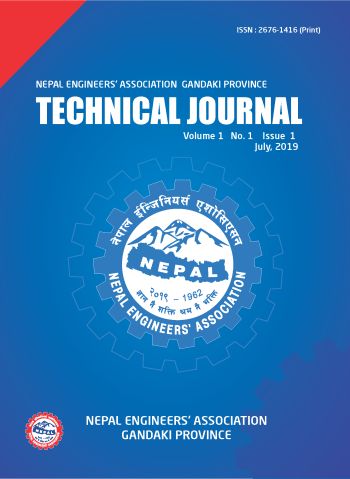Study and Analysis of Pounding Effect between Adjacent RC Buildings
DOI:
https://doi.org/10.3126/tj.v1i1.27710Keywords:
Pounding, Gap Element, Fast Non-linear Analysis (FNA), SAP 2000, Adjacent BuildingsAbstract
Pounding occurs when the adjacent buildings start vibration out of phase during the seismic activity which causes the collision between the adjacent structures. Due to higher cost of land in cities people have tendency to attach the buildings at property line. Earthquakes can cause pounding when adjacent buildings have little gap or no gap providing separation. Due to pounding effect structural and non – structural damage may occur in the adjacent buildings.
The main objective of this research is to assess the seismic response of common residential RC buildings that has been constructed with no gap with the adjacent structures and to find the minimum gap requirement for the commonly constructed buildings of Nepal.
For this study two different cases with varying separation distance between adjacent buildings have been considered. First case is the adjacent buildings having equal storey height but different number of stories. It includes models having 4 and 2 stories and 4 and 3 stories. Second case is the adjacent buildings having unequal storey height but same number of stories. It includes models having 3 and 3 stories and 4 and 4 stories. In both cases adjacent buildings have same material & sectional properties. Non-linear dynamic analysis is performed using El-centro earthquake data as ground motion. Gap element has been used to simulate the pounding force between buildings. Adjacent buildings having different overall height are modelled in SAP 2000 v 15 using gap element for pounding study. The seismic responses in terms of joint displacement, joint acceleration, pounding force are presented. Joint displacement and joint acceleration comparison for both pounding and no pounding cases are presented.
Gap calculation from NBC and IS code, ABS and SRSS method was compared with gap required to avoid pounding force between adjacent structures and appropriate gap was recommended.
Downloads
Downloads
Published
How to Cite
Issue
Section
License
© Technical Journal
Authors are required to transfer their copyright to the journal.




